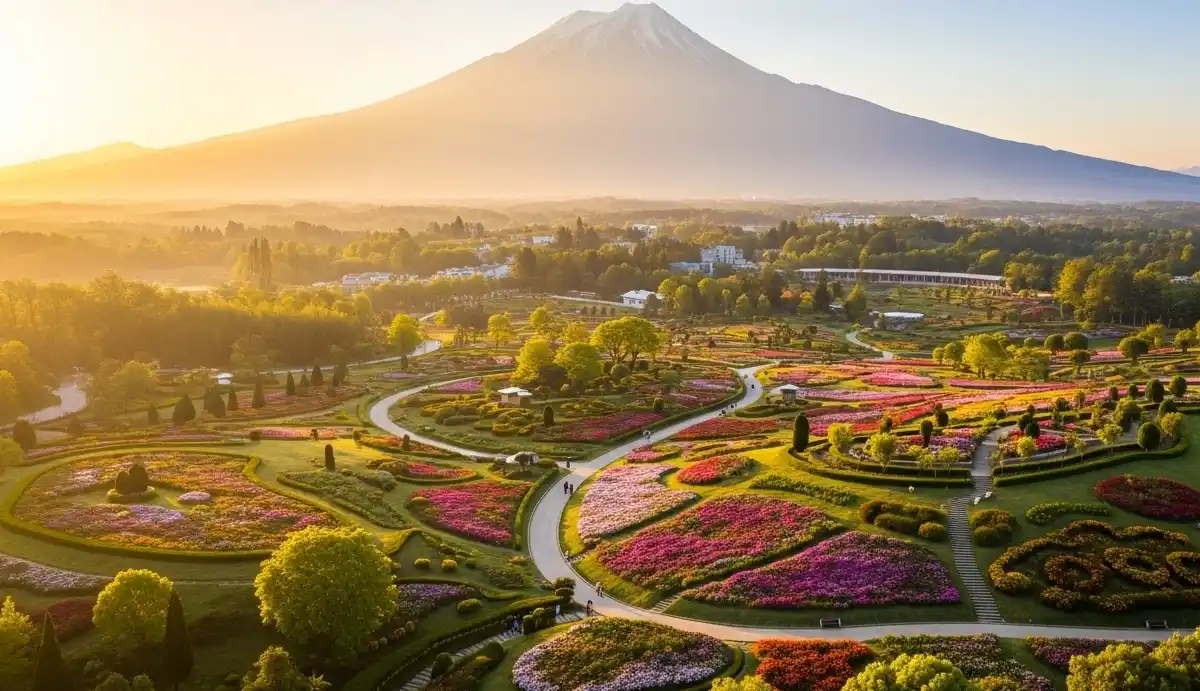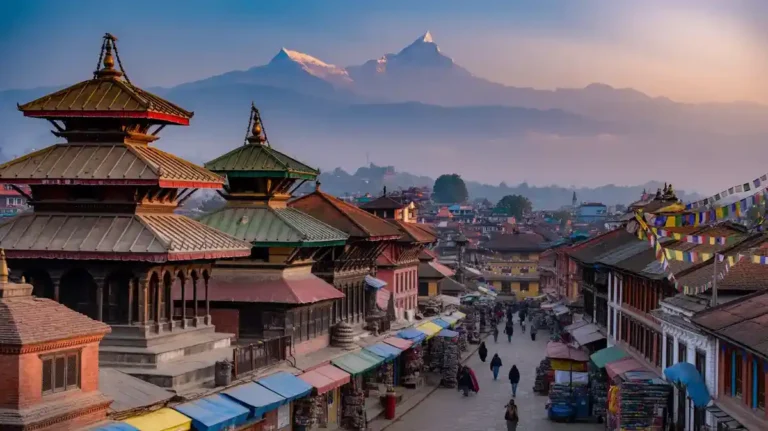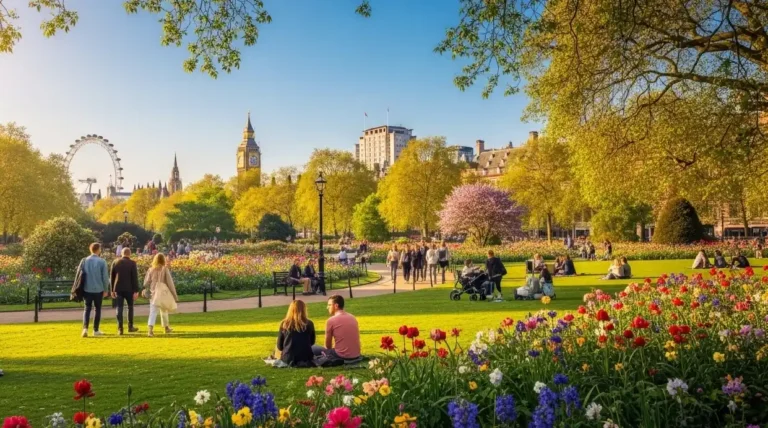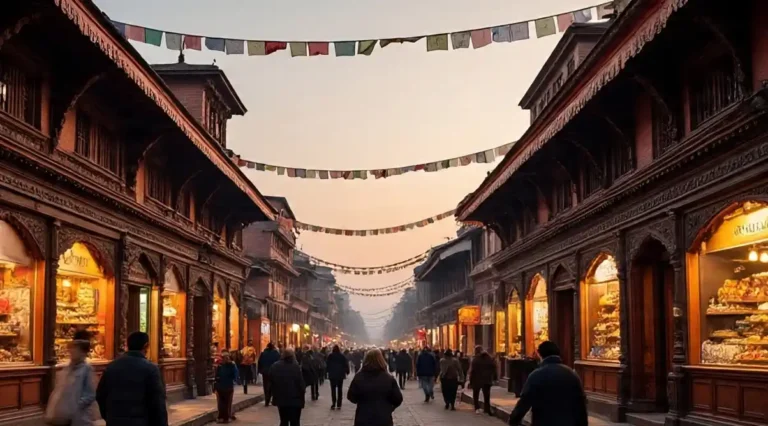Godawari Botanical Garden Is Nepal’s Best-Kept Secret (Until Now) in 2025
Godawari Botanical Garden is one of the most beautiful places to explore in Nepal. Located at the base of Mount Phulchowki, in the southeastern part of the Kathmandu Valley, this garden is about 18 km south of Kathmandu and easily reachable by public buses, minivans, or a taxi from Lagankhel Bus Stand.
It’s perfect for a day trip, a weekend trip, or even an overnight trip. The peaceful setting offers an ideal escape from the concrete jungle and busy city life. You can enjoy clean fresh air, beautiful views, and a relaxing time surrounded by nature.
- Location: Situated in Godawari Municipality, Lalitpur District, about 18–19 km south of Kathmandu, at the base of Mt. Phulchowki.
- Transport (2025): Easily reachable by taxi, bus, or minivan from Kathmandu or Patan; taxis cost Rs. 500–1300; buses are budget-friendly from Lagankhel, Ratna Park, and Tripureshwor.
- Entry Details: Open daily from 9:30 am; closes at 4:00 pm (Nov–Jan) and 5:00 pm (Feb–Oct); free general entry; NPR 500 for foreigners and NPR 200 for children under 10.
- Garden Size & Features: Covers 82 hectares with 30+ themed zones like rock garden, rose garden, Japanese garden, physic garden, and greenhouses.
- Plants & Biodiversity: Hosts 500+ species including orchids, medicinal herbs, trees, shrubs, climbers, succulents, rhododendrons, and rare native plants.
- Activities: Ideal for walking, photography, picnics, birdwatching, relaxing, plant education, and light hiking to Phulchowki Hill.
- Nearby Adventures: Offers hikes to Phulchowki, Lakuri Bhanjyang, Chapadevi, and more; scenic views, bird habitats, and forest trails.
- Cultural Attractions: Visit Godawari Kunda, Pharping, Dakshinkali, Swayambhunath, Boudhanath, and Pashupatinath nearby.
- Dining Options: Try fried trout at Village Rest House, dal bhat at Godavari Village Resort, or affordable meals at Tulip De’ Restaurant.
- Best Time to Visit: Spring (Feb–Apr) and Autumn (Oct–Dec) offer the best weather and floral beauty; avoid July–Sept due to monsoon rains.
- Travel Tips: Bring water, sun protection, insect repellent, and wear good shoes; avoid littering and support local vendors.
- Pros: Peaceful, educational, accessible, great for families and nature lovers.
- Cons: Basic facilities, limited plant variety compared to global gardens, permits needed for certain areas.
The National Botanical Garden, also called the National Botanic Garden of Nepal (NBG), covers 82 hectares and features a wide range of plant species.
You’ll find medicinal plants, shrubs, trees, lilies, ferns, cacti, succulents, rhododendrons, and orchids. There are themed areas like the biodiversity education garden, rock garden, Japanese style garden, and physic garden.
The garden is also great for education, scientific investigation, and conservation, with photo signs and detailed plant info along the trails.
The garden’s history dates back to 1962, when it was established under King Mahendra. It has seen collaborations with the Royal Botanic Garden Edinburgh (RBGE) and British horticulturists like Geoffrey Herklots and Tony Schilling.
This partnership led to rich collections, organized groupings, improved layout, and ongoing activities that enhance the visitor experience.
Whether you’re a student, researcher, nature lover, or traveler planning Nepal travel in 2025, this spot is a perfect mix of beauty and learning. With seasonal beauty in spring, summer, and even winter, Godawari offers something magical all year round.
Where Is Godawari Botanical Garden Located?
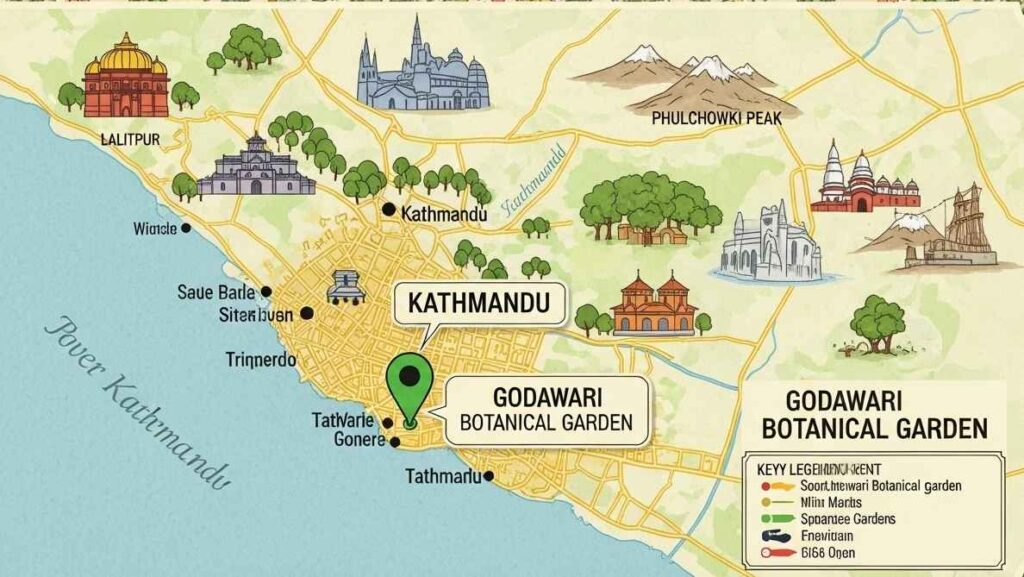
Godawari Botanical Garden sits in one of the most serene corners of Nepal, offering a natural escape close to the capital. Here’s a beautiful overview of its location:
- City: Godawari Municipality
- District: Lalitpur, Bagmati Province
- Country: Nepal
- Distance from Kathmandu: Approximately 19 km south
- Region: Southeastern edge of Kathmandu Valley
- Nearby Landmark: At the base of Mount Phulchowki (2715m elevation)
- Garden Altitude: Around 1515m
- Access Road: Satdobato–Godawari Road
- Address Code: H9WJ+X5W, Godawari 44709
- Postbox: No. 3708
- Phone: (977) 129-0546
This location combines natural beauty with ease of access, making it a perfect destination for nature lovers and those seeking a peaceful getaway from city life.
How to Reach Godawari Botanical Garden (2025 Transport Guide)
The Godawari Botanical Garden sits peacefully at the base of Phulchowki Hill in Lalitpur, just 15 km (9 miles) south of central Kathmandu.
Whether you’re a nature lover or just looking for a quiet getaway, the garden is well-connected by road with multiple transport options, each suited for a different travel style.
From Kathmandu City Center
You can drive yourself or hire a private vehicle from Kathmandu. The journey via Satdobato-Godavari Road takes about 45 minutes to 1 hour, depending on traffic. Taxis are also available for around Rs. 1300. If you prefer speed and comfort, this is a great choice. Parking is available near the garden entrance.
For a more local experience, you can use a mix of microbuses, tempos, or minivans, often departing from Ratna Park or Tripureshwor. These give you a glimpse of daily city life while heading toward nature.
From Patan (Lalitpur)
From Patan, the garden is closer. A taxi ride costs around Rs. 500–600 and takes about 20 minutes. If you’re looking to save, hop on a local bus near the Lagankhel Bus Stand, a major transport hub. Buses run frequently, and the ride takes approximately 45 minutes to 1 hour.
Locals are helpful, and conductors can guide you to the correct bus. Just board, pay fare (NPR 20–30), and enjoy the ride to the Godawari stop.
Kathmandu to Godawari by Public Bus
Public buses are a budget-friendly and popular option. One of the most used routes is Line 3, running from Tripureshwor to Taukhel. From Taukhel, it’s a short walk to the garden. This route takes about 1 hour and 10 minutes.
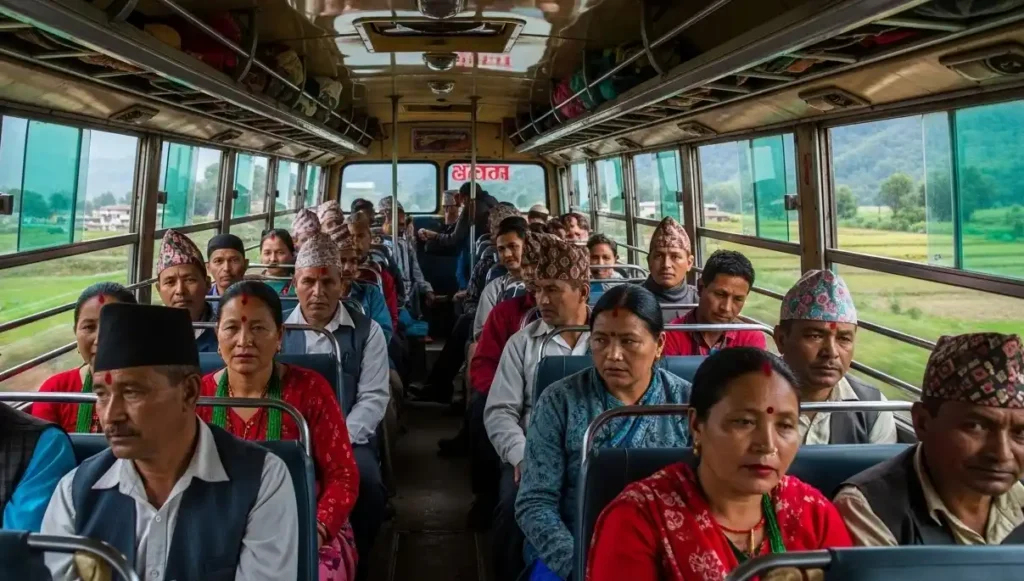
Another common route starts at Ratna Park, connecting through Lagankhel. You’ll switch buses at the Lagankhel Bus Stand and continue toward Godawari. This trip may take 1.5 to 2 hours due to multiple stops, but it’s ideal for travelers seeking affordable and local travel.
Cable Car to Godawari (if applicable by 2025)
As of 2025, there is no operational cable car directly to the Godawari Botanical Garden. However, plans and discussions are ongoing for a future cable car to Phulchowki Mountain, which lies nearby.
Once built, it may enhance access and offer a scenic ride. The completion timeline has not been confirmed, but this future project holds great promise.
Entry Fees, Opening Hours, and Visitor Info (Updated 2025)
Godawari Botanical Garden in Nepal is a peaceful and scenic destination for nature lovers. Entry is simple and stress-free — there is no admission fee for general entry, making it easy for families, students, and tourists to enjoy the beautiful surroundings.
🕘 Opening Hours
- Opens every day at 9:30 am
- Closes at 4:00 pm from November to January
- Closes at 5:00 pm during the rest of the year
🎟️ Entry Fees
- Free entry for regular visits
- Some special events may have separate charges
🌿 Visitor Info
- Part of the wider Botanic Garden network
- Includes the Attenborough Arboretum
- Welcomes more than 20,000 national and international visitors annually
Whether you’re planning a quiet walk, a family picnic, or a photography day out, this garden is an ideal spot in all seasons. The clear timing and entry rules make it easy for anyone to visit without confusion.
Godawari Botanical Garden: What to Expect
Godawari Botanical Garden is a beautiful and serene place located near Kathmandu, Nepal. It spreads across 72 hectares and is home to over 500 plant species.
Visitors can enjoy a wide variety of botanical collections and colorful displays, especially during the spring and autumn seasons when the garden is at its most vibrant.
Surrounded by the scenic views of Mt. Phulchowki, also known as the Hill of Flowers, the garden is an ideal spot for light hiking, cycling, and nature walks.
The peaceful atmosphere makes it a perfect destination to relax, unwind, and connect with nature.
To make the most of your visit, wear comfortable walking shoes, carry water, and use sun protection. Insect repellent is also useful for a pleasant experience.
The garden is accessible, but visitors with mobility needs should consider bringing their own wheelchair, stroller, or wagon.
Thematic Zones & Attractions Inside the Garden
The Godawari Botanical Garden, also called the National Botanical Garden, is full of natural charm and learning spots.
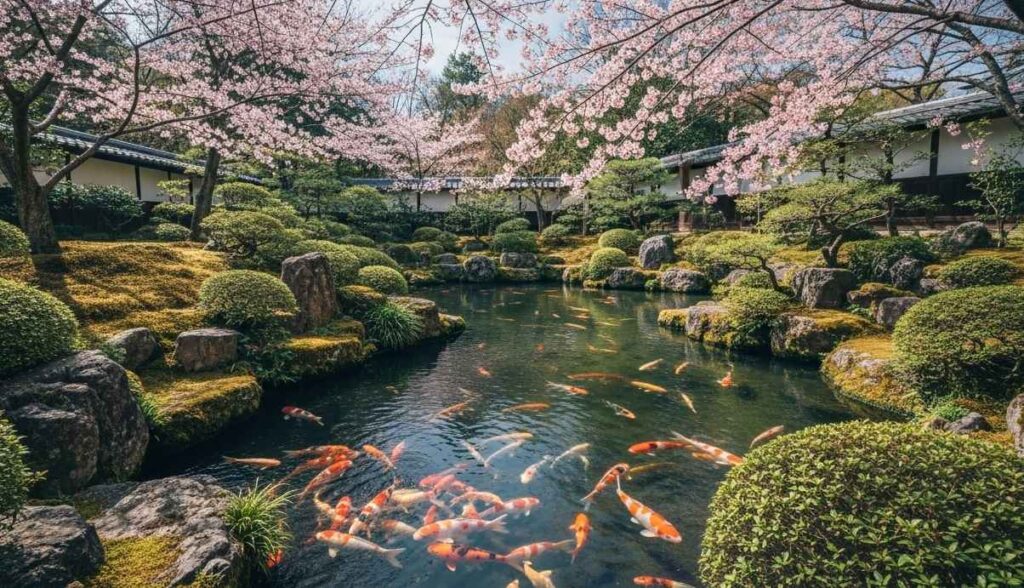
Its thematic zones feature rich plant collections like ferns, flowering plants, conifers, gymnosperms, and exotic plants.
Carefully designed greenhouses maintain exact temperature and humidity conditions, helping many rare plants grow beautifully.
Wander through the peaceful rose garden filled with colorful rose species and cultivars.
See the xerophytic plants thriving in dry conditions, and discover alpine plants from cold, mountainous environments. These displays show Nepal’s diverse flora.
The garden also supports education and research. There are educational spaces and research areas focused on botany, plant diversity, conservation strategies, and plant genetics.
A seed bank helps preserve genetic diversity and supports future propagation. Flowing through the garden is the Godawari River, adding to its scenic beauty.
The nearby Phulchowki mountain offers opportunities for hiking, cycling, and nature views.
From the garden, the view of Mt. Phulchowki highlights the area’s rich biodiversity and lush natural landscape, making it a must-visit spot for visitors who love nature and learning.
Top Things to Do at Godawari Botanical Garden
Things to Do at Godawari Botanical Garden include exploring plant collections, enjoying scenic nature, birdwatching, photography, hiking to Phulchowki Hill, relaxing in peaceful surroundings, learning about plant life, and visiting the sacred pond Godawari Kunda.
1. Explore Plant Collections
The garden has many plant collections. You will see native species, exotic species, and many diverse plants. Wander through the garden and enjoy the plant displays and green landscapes.
2. Enjoy Nature and Scenery
The scenic beauty here is peaceful and calming. There are small ponds, open areas, and colorful flora. It’s a great spot for a peaceful day and to unwind in natural surroundings.
3. Go Birdwatching
The garden is rich in biodiversity. Many birds live here. It’s perfect for nature lovers who enjoy birdwatching in a quiet, green space.
4. Try Photography

There is so much to capture here—bright flowers, wide scenery, and beautiful trees. Photography lovers will find amazing shots all around.
5. Hike to Phulchowki Hill
The garden is a starting point for hiking to Phulchowki Hill. It’s a popular destination for day hiking, half-day hikes, or full-day hikes. The trails are great for short trips too.
6. Relax and Have a Picnic
Families can enjoy picnics in the garden. The environment is safe and fun for everyone to enjoy the outdoors and relax.
7. Visit the Sacred Pond
The Godawari Kunda is a sacred pond near the garden. It is a quiet attraction and adds beauty to the area.
8. Learn from Garden Displays
There are many signs and boards with information about plant species, plant conservation, and research. These are great educational opportunities for both kids and adults to learn.
Nearby Hikes and Scenic Adventures
Godawari Botanical Garden in Nepal is more than just a place for plants and flowers. It’s a starting point for some of the most beautiful nearby hikes and scenic adventures in the valley.
From peaceful nature trails to full day hikes, this area is perfect for anyone who wants to be close to nature, breathe fresh mountain air, and enjoy time outdoors.
A popular trail is the Godavari to Fulchoki Day Hike. This 9-hour trek takes you through green hills, rich with local flora and fauna, ending near Phulchowki, the highest hill around Kathmandu.
If you want something lighter, the Half-day Godawari to Pulchowki Nature Hike (around 6 hours) offers a gentler experience, still filled with great views and forest beauty.
Those with more time can enjoy the Phulchowki Day Hiking, an 8-hour trail known for its panoramic views from the peak. It’s a favorite among nature lovers and birdwatchers.
Most of these hikes can be booked on Tripadvisor with free cancellation, and prices range from C$101 to C$154, depending on the route and guide.
Other Highlights:
- Chapadevi Hiking Trail: A peaceful path with lush landscapes, ending at a temple on the summit.
- Lakuri Bhanjyang: Offers a short climb to a scenic tower with sweeping valley views.
- Godawari Hiking Trail: Located near Shivapuri National Park, it winds through dense forests, home to colorful birds and butterflies.
- Bagdwar and Godawari Kunda: These are quiet sacred sites, perfect for reflection or picnics, with deep religious significance and tranquil surroundings.
- Chapakharka: A scenic area often included in popular hiking routes, ideal for spotting rare bird species.
The best part is that these trails are suitable for all fitness levels and time constraints. Whether you go solo or join one of the many guided tours, each path gives you an enriching experience of nature, culture, and peace.
Exploring the hills around Godawari feels like discovering a hidden paradise — full of life, color, and breathtaking views.
Religious and Cultural Attractions Near Godawari
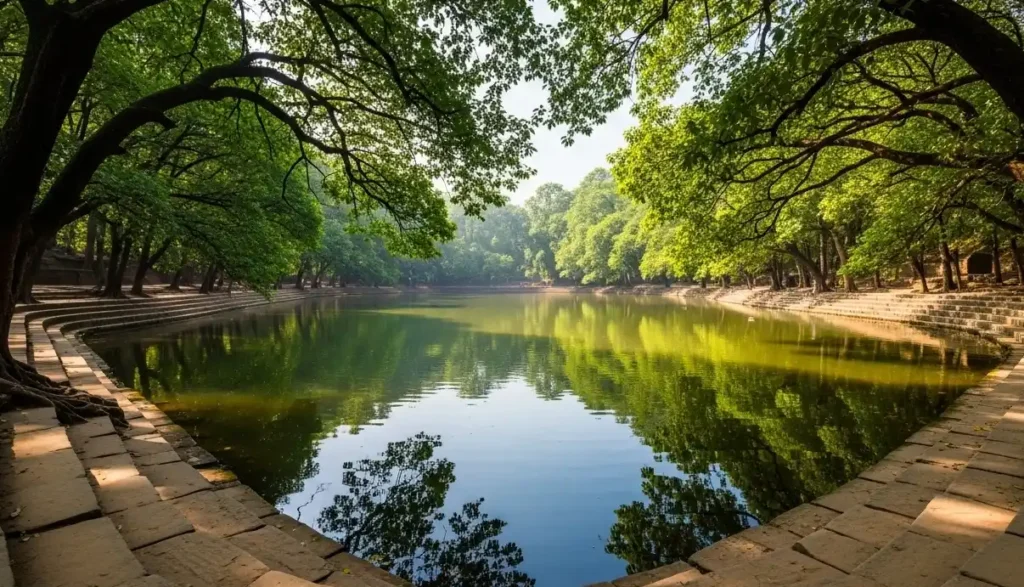
Godawari is one of Nepal’s most peaceful and culturally rich destinations. Surrounded by hills and greenery, this area is home to sacred landmarks that hold deep meaning for both Hindus and Buddhists.
The Godawari Botanical Garden is not just for nature lovers—it houses the Godawari Kunda, a sacred pond and popular pilgrimage site for Buddhists.
Just south of Godawari lies Pharping, an ancient and spiritual town known for Yangleshö, where Guru Padmasambhava attained enlightenment.
The Vajrayogini Temple, Shesnarayan Temple dedicated to Lord Vishnu, and Gorakhnath Temple honoring Gorakhnath, all reflect the area’s strong Hindu traditions and historical depth.
Nearby Dakshinkali Temple is dedicated to goddess Kali, a respected deity in Hinduism. The area continues to Kirtipur, an ancient settlement known for its traditional architecture, hilltop temples, and scenic views of Kathmandu and surrounding hills.
Visitors can also explore the famous Swayambhunath Stupa and Boudhanath Stupa—both significant to Buddhist culture.
The Swayambhunath offers panoramic views of the valley, while Boudhanath is one of the largest stupas in the world and a UNESCO World Heritage site.
The spiritual journey can conclude at Pashupatinath Temple, a sacred Hindu site for Lord Shiva on the banks of the Bagmati River.
Best Time to Visit Godawari Botanical Garden
Visiting Godawari Botanical Garden in Nepal during the right season makes the trip more beautiful. The garden looks stunning, the air is fresh, and walking through nature becomes a joyful experience.
These are the most recommended months to enjoy the natural beauty, outdoor activities, and peaceful climate of Godawari.
🌸 Spring (Late February to Mid-April)
- Weather: Warm days, low humidity, clear skies
- Temperature: Around 72℉ to 74℉
- Experience: Great for photography, exploring, and enjoying the blooming garden
🍂 Autumn (October to December)
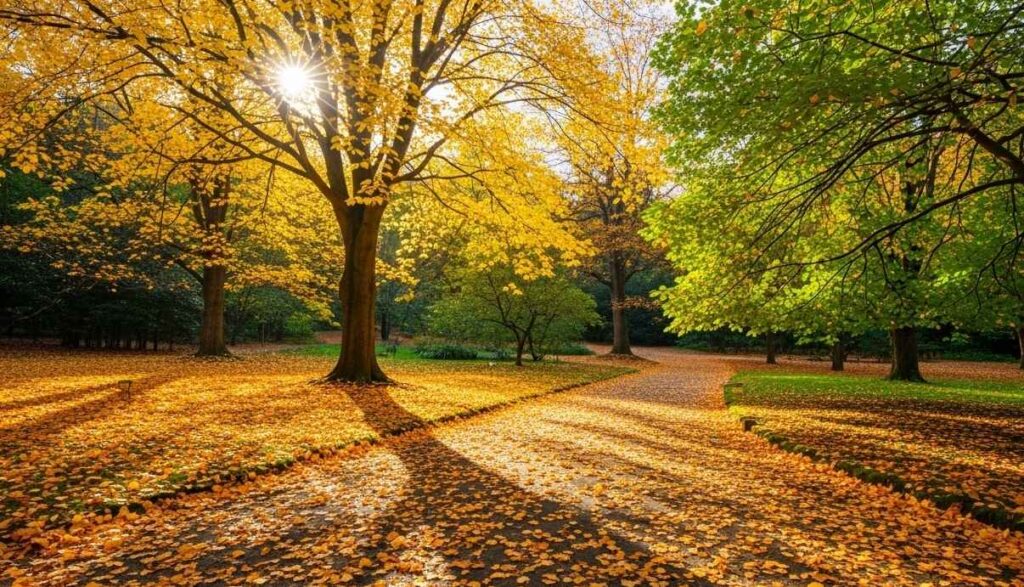
- Weather: Cool, dry, and comfortable
- Temperature: Around 36℉ to 72℉
- Visibility: Excellent for sightseeing and clear mountain views
- Precipitation: Very low — 7.61 mm to 28.6 mm
- Tourist Tip: Ideal high season with calm weather and fewer hassles
☀️ May to June
- Weather: Warm, moderately humid, but still enjoyable
- Temperature: 73℉ to 90℉
- Experience: Good for those who like sunny and bright days
Avoid the monsoon months (July to September) if possible, as heavy rainfall and high precipitation (up to 460.99 mm) may affect your outdoor time.
Where to Eat in Godawari
Godawari is a wonderful place to enjoy tasty local food. One top choice is the Village Rest House, known for its perfectly cooked fried trout.
It’s located near the Godavari Village Resort and is a favorite among both tourists and locals. The fish with gravy is also available, but the fried trout is the highlight.
The Godavari Village Resort also offers great dining options. The chicken dal bhat here is very popular—freshly made, satisfying, and served in generous portions.
Many visitors, even those not very hungry at first, end up going for second servings.
If you want a calm dining experience, head to the Village Trout Mini Resort. It’s a little away from the busy areas, surrounded by nature.
The resort serves fresh trout fish from nearby fish farms and is ideal for lunch or dinner with friends or family.
You can get there easily via minivan from the Godawari Botanical Garden to Taukhel Pipalbot, then a short walk.
For those looking for quick and affordable meals near the main entrance of the botanical garden, the Tulip De’ Restaurant is a great stop.
The menu includes momos, thupka, pizza, and burgers, with budget-friendly prices and a wide range of dishes to suit every taste.
Safety, Travel Tips & Responsible Tourism
Godawari Botanical Garden is a peaceful place just outside Kathmandu, perfect for nature lovers and those who enjoy sightseeing and learning about local culture.
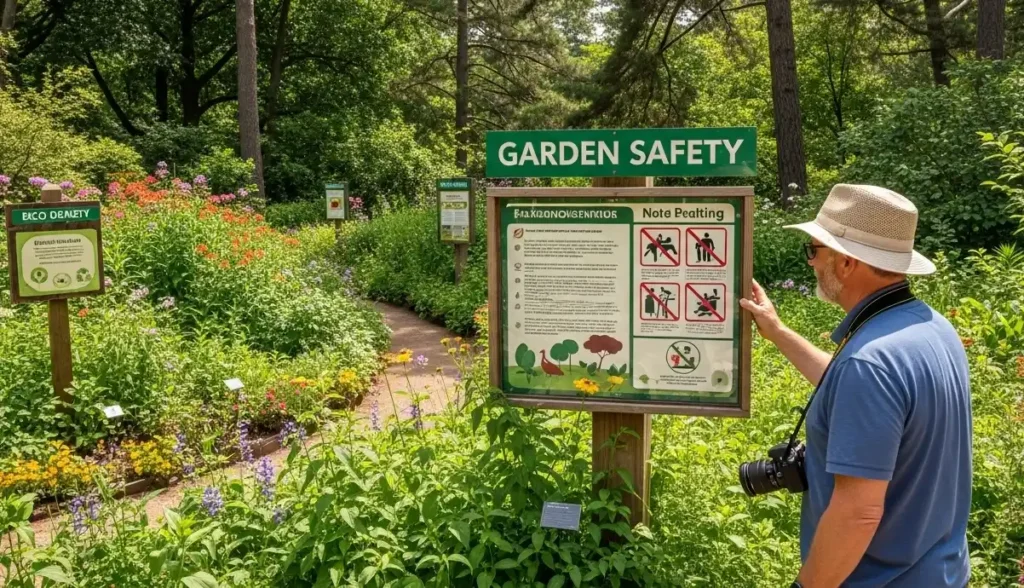
Always check the weather forecast before visiting and dress modestly. Bring your own water, snacks, and reusable bags, especially during spring or autumn when the garden is in full blooming beauty.
To stay safe, follow the designated paths and avoid unmarked areas to prevent accidents. Keep your valuables secure and watch your belongings.
Use repellent to stay protected from insects, especially during the monsoon season. Stay hydrated and take short breaks during your hike around the garden, including nearby Champadevi.
Show care for the environment by not littering, avoiding plastic bottles, and not damaging plants or disturbing wildlife.
Choose local vendors for food or souvenirs and respect local customs, traditions, and the local community.
Learn about the history and significance of the area while practicing responsible tourism throughout your visit duration.
Day Trips and Nearby Attractions from Godawari
Godawari is a wonderful place in Nepal, perfect for nature and culture lovers. One of the best day trips is the Phulchowki hike.
This trail offers panoramic views of the Kathmandu Valley and passes through colorful rhododendron forests, especially beautiful in spring. The trail can be walked or accessed by jeep, making it a popular choice for all visitors.
Another peaceful spot is the Godawari Botanical Garden. It is well-maintained, quiet, and full of green spaces for a relaxing time in nature.
Close by, the sacred Godawari Kunda, a sacred pond with religious significance, offers a calm escape.
Families and wildlife lovers will enjoy the Central Zoo, home to many animals and perfect for an educational experience.
For cultural exploration, cities like Patan and Bhaktapur are just a short distance away.
Patan is filled with artistic heritage, museums, and beautiful temples, while Bhaktapur shines with vibrant streets, medieval architecture, palaces, and ancient squares.
Each destination offers a unique glimpse into Nepal’s historical and cultural sites, making these nearby spots a great addition to your Godawari visit.
Pros and Cons of Visiting Godawari Botanical Garden
Godawari Botanical Garden is a peaceful and beautiful place near Kathmandu. It offers nature, learning, and recreation for all ages. With easy access, fresh air, and plant diversity, it is perfect for a relaxing escape.
Pros of Visiting Godawari Botanical Garden
- Peaceful escape: A calm and serene environment away from the hustle and bustle of the city
- Nature appreciation: Great place to enjoy flora, fauna, flowers, trees, and local varieties
- Recreational space: Perfect for walks, meditation, yoga, and outdoor gatherings
- Educational value: Learn about plant species at the museum and through documentation of Nepal’s plant life
- Bird watching: Rich topography and diverse environments support many bird species
- Supports science: Helps in conservation, research, and scientific studies of plants
- Easy to reach: Accessible from Kathmandu, the capital city
Cons of Visiting Godawari Botanical Garden
- Limited plant variety: May not have as many species as larger botanical gardens
- Permission needed: Some activities or areas require prior permission
- Crowd rules: There are set rules for crowd control and waste management, which help protect the garden
- Basic facilities: The facilities are simple, focusing more on nature than luxury
This destination is best for those who love nature, calm places, and educational trips. With light planning, it becomes an ideal place for recreation and learning.
Godawari Botanical Garden Ticket Price
Visitors can explore the peaceful and beautiful surroundings of Godawari Botanical Garden at a reasonable cost.
Foreign nationals are required to pay NPR 500, while children under 10 years enjoy a discounted entry of NPR 200.
The garden operates daily and welcomes guests from 9:30 am to 5:00 pm, giving plenty of time to walk around, relax, and admire the wide variety of plants and trees.
Clear ticket information is often displayed on official brochures and published by the Nepal Tourism Board, ensuring a smooth and informed visit.
Whether you’re a national or an international traveler, the Botanical Garden offers great value and a refreshing escape into nature.
Plants Found in Godawari Botanical Garden
Plants found in Godawari Botanical Garden include medicinal herbs, trees, shrubs, climbers, orchids, and rare species from diverse regions, displayed across thematic gardens that promote conservation, education, and biodiversity.
The Godawari Botanical Garden, officially known as the National Botanical Garden of Nepal, is home to an impressive variety of plants.
You’ll find medicinal herbs, orchids, trees, shrubs, climbers, and many rare and native species from specific regions.
The garden features 30 thematic gardens, such as the physic garden for medicinal properties, the edible plant garden with food plants, and the biodiversity education garden, all designed to highlight plant diversity and environmental relationships.
Special areas include collections of orchid species supported by ICIMOD, and unique Mesozoic plants like Ginkgo biloba and Metasequoia glyptostroboides.
The garden also preserves traditional medicine species like Artemisia indica, Buddleja asiatica, Smilax aspera, and native species such as Erigeron annuus, Luculia gratissima, garden angelica, Meconopsis villosa, and Persicaria affinis.
The nearby natural evergreen forest features dominant tree species like Schima-Castanopsis-Alnus. With a strong focus on plant research, conservation, and education, the garden stands as a living classroom for nature lovers.
Conclusion
Godawari Botanical Garden is a peaceful and beautiful nature escape near Kathmandu, perfect for a day trip with flowers, scenic views, and hiking trails. Located at the southeastern edge of Lalitpur, Godawari Botanical Garden is also known as the National Botanical Garden of Nepal.
It was established in 1962 and spreads over 40 hectares, offering rich biodiversity. The garden is home to many diverse plant species, including rhododendrons, ferns, orchids, cacti, and succulents. Spring, especially in March and April, is the best time to visit when flowers are fully blooming.
The garden features several thematic gardens like the physic garden, biodiversity education garden, rock garden, and Japanese style garden. It’s nestled at the foothill of Mt. Phulchowki, the highest peak in the Kathmandu Valley, offering a great spot for nature lovers.
Visitors can also enjoy hiking nearby. Popular trails include the full day hike to Phulchowki Hill and the short hike to Marble Danda, both offering stunning views of the valley. It’s a peaceful retreat close to the city and a perfect way to enjoy the natural beauty of Godawari.
FAQs About Godawari Botanical Garden (2025)
What is the description of Godawari botanical garden?
Godawari Botanical Garden is a peaceful and green place near Kathmandu, Nepal. It sits at the base of Mount Phulchowki and covers 82 hectares. You will see flowers, trees, rivers, and birds all around.
Is Godawari Botanical Garden worth visiting in 2025?
Yes, it is worth visiting in 2025. The garden is clean, full of plants, and has many fun things to do. It is perfect for walks, photos, and nature trips in any season.
What is the botanical garden known for?
The garden is known for its plant collections, peaceful setting, and beautiful views. It has orchids, herbs, flowers, and trees from all over Nepal.
What makes Godawari beautiful?
Its fresh air, green forests, flowing river, and colorful plants make Godawari very beautiful. You can walk, relax, or just enjoy the calm and quiet nature.
What is Godawari famous for?
Godawari is famous for the botanical garden, Phulchowki hiking trails, and Godawari Kunda, a sacred pond. It is also a top place for birdwatching and peaceful visits.
What is special about Botanic Gardens?
Botanic gardens are special because they protect plants, help with learning, and offer quiet places to relax. They also teach us about nature and how to take care of it.
Can we do a picnic in Godawari botanical garden?
Yes, you can enjoy a picnic in the garden. It has many open spots where families and friends can sit, eat, and relax in nature.
How many plants are in the Botanic Gardens?
The Godawari Botanical Garden has over 500 different kinds of plants. These include herbs, flowers, trees, and rare species from all over Nepal.
Who is the largest botanical garden in the world?
The largest botanical garden in the world is the Royal Botanic Gardens, Kew in London, United Kingdom.
Which one is the oldest botanical garden?
The oldest botanical garden in the world is Orto botanico di Padova in Padua, Italy. It was made in 1545.
Who built the Peradeniya botanical garden?
The Peradeniya Botanical Garden in Sri Lanka was developed by the British in the early 1800s during the colonial period.
Which country was the world’s first botanical garden created?
The world’s first botanical garden was created in Italy, in the city of Padua
What is the largest botanical name?
The longest botanical name is Nepenthes rajah, a large carnivorous plant known for its giant pitcher traps.
What is the entry fee to Godawari?
The ticket price for foreigners is NPR 500. For children under 10, it is NPR 200. Locals may get lower rates.
Can I take food or pets inside?
Yes, you can bring food for a picnic. But pets are usually not allowed inside to keep the garden safe and clean.
What are the best things to do in Godawari?
You can walk in nature, watch birds, take photos, explore plants, hike to Phulchowki, relax, or visit the sacred pond Godawari Kunda.
What are the transport options from Kathmandu to Godawari?
You can take a taxi, drive, or use local buses from Kathmandu. Taxis are fast and cost more, while buses are cheaper and slower.
Disclaimer
This travel guide is for informational purposes only. Details may change. For latest updates, always confirm with official sources. Content by TravelDrizzle.com.
